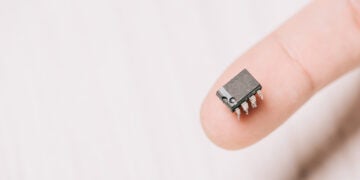UltraLibrarian.com is now hosting the largest available PCB libraries in the world, but how can a designer be sure the parts are built consistently? Maintaining a consistent library is a critical factor to many designers and librarians in order to create uniform PCB designs. At Ultra Librarian, we follow a set of standards which ensures a consistent component is created every time – all while still allowing the end user to customize it as needed.
Unfortunately, industry standards do not always cover requirements for every circumstance. For example, the IPC-7351 standard for surface mountable (SMT) parts covers a series of pin connections and generally represents less than 40 families of parts. However, through-hole parts are not covered by the IPC-7351 and therefore other industry standards need to be applied. Industry standards also do not take into account CAD tool limitations, as demonstrated by the naming conventions required in the IPC-7351. The IPC-7351 naming conventions prohibit it from being used in several CAD tool environments because the IPC name is too lengthy for the CAD tool.
Due to the above concerns, as well as differences between manufacturer recommendations and the IPC, Ultra Librarian uses different standards and specifications as necessary, effectively creating a unique standard. Keep reading to get an overview of the Ultra Librarian library standards (for a more comprehensive look at our standards, click here).
General Library Standards:
Wherever possible, our parts are consistent with the IPC-7351B standard. Exceptions to this would be items not covered by the standard, like through-hole components, component naming conventions, and the use of English units of measurement. Areas not covered by the IPC standard (such as symbols, attributes, silk screen information, etc.) are typically based on other industry standards or otherwise documented.
The information for the various CAD tools we support is generated from a single database. The data is stored in a vendor neutral format – meaning each component stores all the relevant data from the 22+ CAD tools we support. All footprints and symbols are built in English units (Mils) unless otherwise specified. Using the Ultra Librarian tools, a user can easily switch between English units and metric units, depending on what their design needs are.
Footprints:
All footprints are based on the IPC-SM-7351-B standard where appropriate. Exceptions would include thru-hole components as well as parts built to a specific manufacturer or customer standard. By default, components in our library rely on the IPC-7351 calculated land pattern sizes wherever possible. If there is not enough information to properly build the component using the IPC standard, the manufacturer’s recommended land pattern is used. Additionally, if a library component is produced in collaboration with the manufacturer, and the manufacturer requests their land pattern is used in lieu of the IPC, the component will be built to the manufacturer’s land pattern. We also deviate from the IPC-7351 standard in regard to naming conventions, as not all CAD tools will accept the longer IPC name.
Symbols:
All symbols are built based on the ANSI Y32.2-1975 (Reaffirmed 1989) standard. Pin information is arranged in order numerically by pin number. Although most engineers prefer to have symbols organized by function, there is currently no standard method of pin arrangement by function in the industry. Therefore, our team of Librarians has decided to provide pin information in numerical order for consistency. If a designer needs to rearrange the symbol by function, they can do so after exporting the component into their native CAD tool. This dramatically reduces the amount of data entry a designer needs to do while still allowing for a custom arrangement.
Confidence in the accuracy of CAD libraries is our number one priority. Due to this, all models are rigorously vetted before they are introduced into the library. By maintaining a consistent standard, our component library allows engineers and designers to be confident they are receiving accurate, quality data built to a consistent standard.
Check out our parts and see the standards for yourself by signing up for free with www.UltraLibrarian.com.








